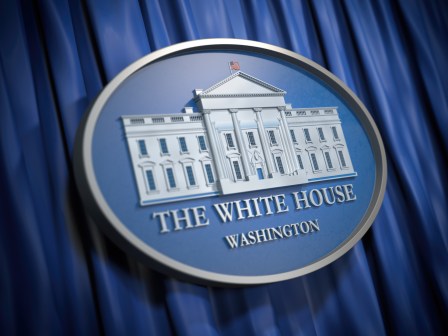In final report, commission makes plea for DOD to field AI fast

The Department of Defense faces a choice: Field artificial intelligence quickly or risk losing the next big war. At least that’s the general message from an influential commission’s final report on AI in national security.
The National Security Commission on AI — a congressionally mandated committee of business leaders and former government officials tasked with exploring and issuing guidance on DOD’s use of AI — submitted its final report to Congress and the executive branch earlier this month. Throughout its more than 700 pages of recommendations, analysis and blueprints for how the U.S. national security agencies should adopt AI, the report is laced with a constant reminder of the importance of AI and the danger in moving too slowly to adopt it.
The risks are already being multiplied, according to the report. From sophisticated cyberattacks to disinformation campaigns, AI is being used as a tool to increase the complexity and precision of threats against national security.
To counter these threats and new ones that will emerge both in battle and everyday life, the U.S. government needs to adopt AI with speed, the report warns.
“It’s important to realize that you can’t just flip a switch and have these capabilities in place, it takes steady, committed hard work over a long period of time to bring these capabilities to fruition,” NSCAI Commissioner and CEO of Amazon Web Services Andy Jassy said in a release.
Other leaders on the commission, including Chair Eric Schmidt, have estimated that the U.S. is only a few years away from being surpassed in technical capabilities by China. Some have said that China already leads in certain areas, like surveillance and facial recognition.
To win in the long term, former Deputy Secretary of Defense Bob Work, the commission’s vice chair, boiled the massive report down to four pillars in a recent meeting:
- Leadership: The report calls for new policy councils within the White House and offices within national security departments to focus specifically on technology competition and AI development.
- Talent: Much of the report is dedicated to the idea that nothing will happen without the right people — from technical experts to policy wonks. Recruiting them into government underlies many of the report’s recommendations.
- Hardware: Work said the U.S. must retain its “two-generation” lead in developing computer chips and other hardware to continue leading in AI. With the need for massive amounts of computing power, GPUs and TPUs have spiked in demand.
- Investment: The government’s vast resources need to be funneled to institutions that study basic AI research and development to improve tech and make new breakthroughs. The commission recommends investing $32 billion a year by 2026 in basic AI R&D.
Those four pillars manifest in dozens of ways throughout the report with different target audiences, from the DOD itself to lawmakers that write annual policy bills, receiving different, specific recommended actions.
Commissioners will testify before Congress in the coming days, pushing for their recommendations to be turned into law. Previous interim reports have already gained traction on the Hill, with even the commission’s biggest and boldest ideas, like creating a “digital reserve corps” and others, gaining lawmaker support.






